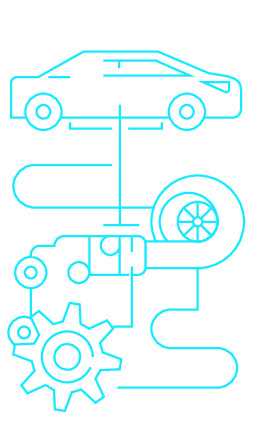|
|
|
| Module code: FT25.1 |
|
|
5V+1U (6 hours per week) |
|
7 |
| Semester: 5 |
| Mandatory course: yes |
Language of instruction:
German |
Assessment:
Written exam 120 min.
[updated 30.09.2020]
|
FT25.1 (P242-0060, P242-0061) Automotive Engineering, Bachelor, ASPO 01.10.2015
, semester 5, mandatory course
FT25.1 (P242-0060, P242-0061) Automotive Engineering, Bachelor, ASPO 01.04.2016
, semester 5, mandatory course
FT25.1 (P242-0060, P242-0061) Automotive Engineering, Bachelor, ASPO 01.10.2019
, semester 5, mandatory course
|
90 class hours (= 67.5 clock hours) over a 15-week period.
The total student study time is 210 hours (equivalent to 7 ECTS credits).
There are therefore 142.5 hours available for class preparation and follow-up work and exam preparation.
|
Recommended prerequisites (modules):
FT20 Electric Vehicle Drive Systems
[updated 14.07.2015]
|
Recommended as prerequisite for:
FT27 Vehicle Testing
FT28 Vehicle Simulation
[updated 26.01.2016]
|
Module coordinator:
Prof. Dr.-Ing. Rüdiger Tiemann |
Lecturer:
Prof. Dr.-Ing. Thomas Heinze
Prof. Dr.-Ing. Rüdiger Tiemann
[updated 05.03.2017]
|
Learning outcomes:
Evaluation of the longitudinal dynamics of hybrid drives in subjective driving tests in real traffic with a detailled analysis by the students
Classification of hybrid drives according to electric motor power with special classification of hybrid drives according to power flow.
After successfully completing this module, students will understand the significance of hybrid drives consisting of internal combustion engines and electric motors based on the shortcomings of vehicle drives using internal combustion engines and electric vehicle traction drives. They will understand how different concepts of hybrid vehicle drives work according to the current state of the art.
Students will understand the technical-physical relationships between the function and mode of operation of different hybrid vehicle drives and the consequences in terms of CO2 emissions and vehicle dynamics. They will be able to implement technical modifications to hybrid drive systems and are thus qualified to work as development engineers.
[updated 30.09.2020]
|
Module content:
Imperfections of vehicle drives using combustion engines, imperfections of vehicle drives using electric traction drives.
Essential and additional components (power split devices) of hybrid powertrains and their hybrid-specific properties.
"Sail" mode with engine completely switched off.
Hybrid drive designs and their correlation to the classes of electrical power and power flow.
[updated 30.09.2020]
|
Teaching methods/Media:
Lecture with exercises, simulation calculations and road test Lecture notes and diagrams.
Various simulation software tools (Excel) for students to perform their own simulation calculations with model variants; exercises, practice exams.
[updated 30.09.2020]
|
Recommended or required reading:
- Reif, Noreikat, Borgeest (Hrsg.): Kraftfahrzeug-Hybridantriebe; Springer Vieweg
- Bosch (Hrsg.): Autoelektrik, Autoelektronik; Systeme und Komponenten; 5. Auflage
- Bosch (Hrsg.): Kraftfahrzeugtechnisches Taschenbuch;
- Automobiltechnische Zeitschrift (ATZ);
- Motortechnische Zeitschrift (MTZ);
- http://www.springerprofessional.de/mtzwissen_teil-1/3021960.html;
[updated 30.09.2020]
|


